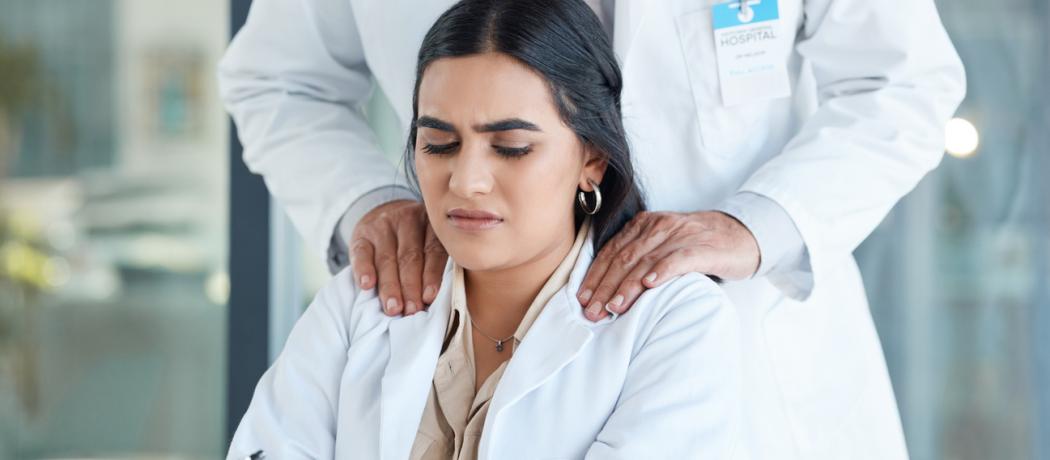A recent Lancet editorial[1] quotes a survey of 2458 doctors in a report on sexism in medicine for the British Medical Association that found that 91% of women doctors in the UK have experienced sexism in the workplace.[2] Sexual misconduct includes assault, rape, and other forms of gender violence, but the medical or surgical setting examples of harassment more commonly include sexist or harassing language, whispering sexual innuendos into the ears of female surgeons while they were performing a procedure, or uninvited close physical contact. Of the women in the survey, 42% felt that they could not report their experiences to their organization or their training program. Speaking out within the profession is very difficult—even in the face of evidence that a psychologically unsafe environment has a negative association with patient outcomes.
The editorial recognizes that most medical jurisdictions have various bylaws declaring that sexualized behavior is unacceptable in any kind of doctor-patient relationship, but there are no formalized regulations when it comes to doctor-doctor or doctor-trainee sexual misconduct. When reports are made, a cycle of inaction recurs: some shock, condemnation, and promises to act on recommendations, which do not get enacted.
In a recent issue of the Bulletin of the Royal College of Surgeons of England, Philippa Jackson, now a senior plastic surgeon, recounts her experience of being sexually assaulted and sexually harassed at work, predominantly during her surgical training, and concludes that “there is a swathe of (predominantly) young women who are being subjected to inappropriate and criminal behaviour on a daily basis.”[3]
In British Columbia, the College of Physicians and Surgeons defines professional misconduct of a sexual nature in very clear terms, carefully excluding touching or behavior and remarks by the physician that are of a clinical nature appropriate to the service being provided.[4] There is a well-written paragraph about registrant-learner and registrant-coworker relationships. In essence, it tolerates no sexual comments or gestures, no personal or sexual relationship “while mentoring, teaching, supervising or evaluating” that individual.[4]
To focus on our own medical community, it is likely that we are no exception and there is some unreported sexism or sexual misconduct aimed at colleagues or trainees. Without data we can make only assumptions. It would serve each physician and each trainee, and each patient too, if the stories of untoward sexual experiences endured or observed between colleagues and trainees could be collected (even if anonymously), the findings reviewed, and appropriate actions taken. Doctor to doctor or doctor to trainee sexual misconduct has no place in medicine.
—George Szasz, CM, MD
References
1. Bagenal J, Baxter N. Sexual misconduct in medicine must end. Lancet 2022;399(10329):1030-1032.
2. British Medical Association. Sexual harassment at work. 2022. Accessed 17 March 2022. www.bma.org.uk/advice-and-support/equality-and-diversity-guidance/gender-equality-in-medicine/sexual-harassment-at-work.
3. Jackson P. Sexual assault in surgery: A personal perspective – A letter to the authors. Bull R Coll Surg Engl 2022;104:7-8.
4. College of Physicians and Surgeons of British Columbia. Practice standard: Sexual misconduct. Accessed 16 March 2022. www.cpsbc.ca/files/pdf/PSG-Sexual-Misconduct.pdf.
If you have experienced sexual misconduct:
If you have experienced sexual assault or misconduct, please report it to the BC College of Physicians and Surgeons, and consider seeking support from BC’s Physician Health Program.
Acknowledgment
I acknowledge my bias and privilege when writing this blog post in that I am not part of the demographic who may experience harassment. Additionally, my clinical, teaching, and research work did not include a focus on sexual harassment. Below is a summary of my professional background to give readers some additional context:
Professor Emeritus, Department of Psychiatry
Co-director, Division of Sexual Medicine Clinical, Teaching, and Research Unit
Director, Sexual and Reproductive Rehabilitation, Spinal Cord Injury Unit, Faculty of Medicine, UBC and G.F. Strong Rehabilitation Centre (1970-1995)
Member of the Order of Canada, honored as “a pioneer in the field of fertility and sexuality of people with physical disabilities” (1998)
This post has been peer reviewed by the BCMJ Editorial Board.
 |
| This work is licensed under a Creative Commons Attribution-NonCommercial-NoDerivatives 4.0 International License. |



The presence of sexual misconduct in medicine is real.
Believe the victims, believe the research already done.
We do not need to tax people who have been harassed/assaulted (mostly women) anymore by asking them to repeat their "stories of untoward sexual experiences endured" to organizations that have failed to act in the past.
What we need is a close examination of the structures where these people are working and why it is still so hard for someone who is harassed or assaulted to come forward, as well as why the harassment and assault is still permitted. That close examination needs to be done by the leaders of the organizations, the schools the hospitals, the medical associations. There is scholarly literature to guide this work as well (e.g. PMID: 32247349 DOI: 10.1016/j.mayocp.2019.12.021), no one needs to start from scratch, but until leaders start rolling up their sleeves to re-examine/dismantle what they have built, change will not come.